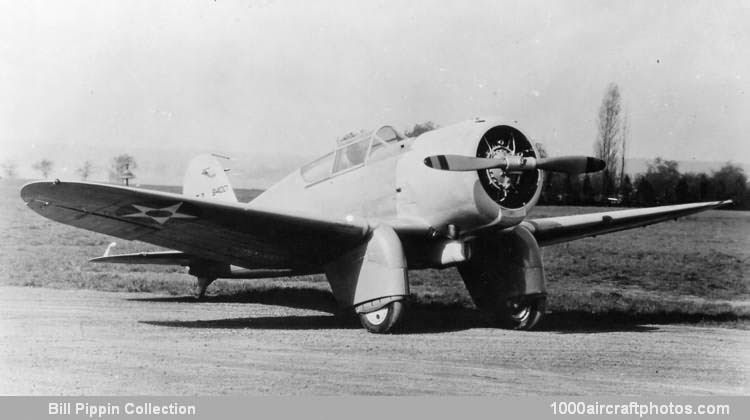06/30/2011. Remarks by Johan Visschedijk: "Despite some skepticism concerning the practicability of the monoplane configuration for the shipboard fighter, the USN Bureau of Aeronautics issued a second requirement for such a warplane on January 24, 1933, the first having been issued seven weeks earlier and for which the Boeing Model 273 was designed and built (as the XF7B-l). To meet the later but essentially similar requirement, a contract was let to Northrop for a prototype assigned the designation XFT-1.
A single-seat all-metal cantilever monoplane with split flaps, spatted main landing gear members and an enclosed cockpit, the XFT-1 was designed by a team led by Ed Heinemann. Powered by a Wright R-1510-26 fourteen-cylinder radial rated at 600 hp at sea level and 625 hp at 6,000 ft (1,830 m), and carrying two 0.30 in (7,62 mm) cowl guns, the XFT-1 first flew on January 16, 1934. The US Navy was critical of its maneuverability, its tendency to spin out of certain maneuvers, its low speed characteristics and its landing speed.
During the course of initial tests, an XR-1510-8 engine affording 650 hp at 8,500 ft (2,590 m) was substituted for the -26, and, in April 1936, the XFT-1 was returned to the manufacturer for more extensive modification. A Pratt & Whitney R-1535-72 Twin Wasp Junior fourteen-cylinder radial rated at 700 hp for take off and 650 hp at 7,500 ft (2,285 m) was installed, this having a long-chord cowling; the vertical tail surfaces were enlarged, and the main wheel spats were revised.
Redesignated XFT-2, the fighter was now 261 lb (118 kg) heavier in empty condition, speed and climb performance were marginally improved, but maneuverability and low speed characteristics were worse. It was pronounced unairworthy by the USN and crashed on July 21, 1936 while being returned to its manufacturer."
